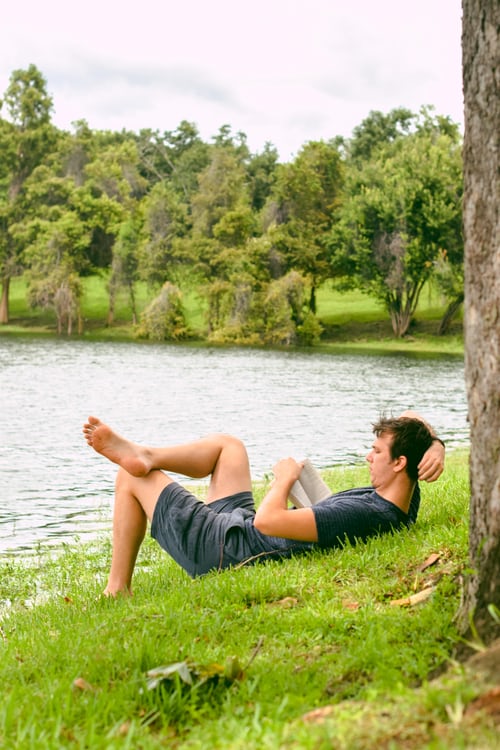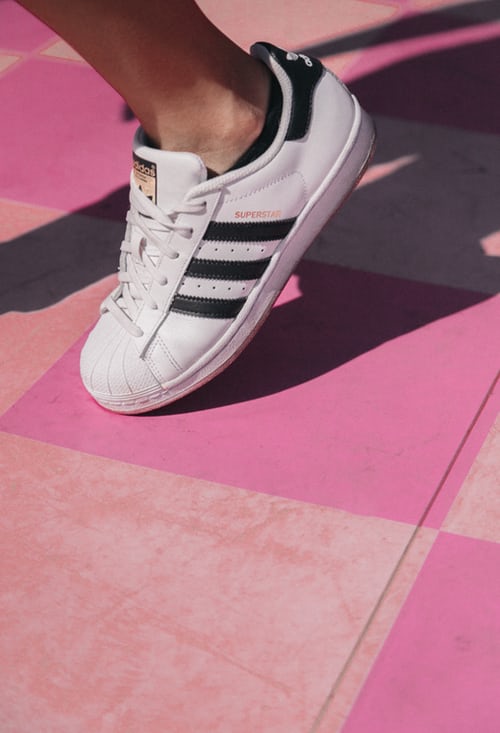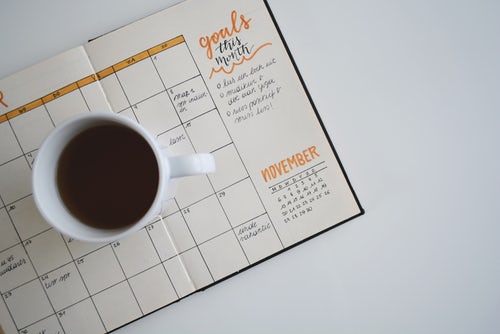Even if you’re not a big exerciser, you probably know exercise, or physical activity, is a critical component of good health—both physical and emotional/mental. Even the Health and Human Services Department of the United States government thinks so, and they get in on the act of improving our nation’s overall health by establishing exercise guidelines.
They recently made some guideline changes you’ll be interested in, if you’re concerned about maintaining or improving your and your family’s health.
A little history—
While I’ve been studying guidelines for some 40 years, doctors and scientists have been writing about them and trying to establish norms since the 19th century. As research improves, the guidelines change. They’re never perfect, but they usually do set a good foundation for people to aspire to. (I wouldn’t count the current food pyramid among those aspirating tools, though. Companies and special interest groups had too much influence in its development.)
Why exercise?
God created our amazing bodies to move in a variety of ways. When you keep that in mind, you realize that exercise can be a form of praise and worship to the One that created you!
But for those of you needing some extra motivation, remember there are tremendous benefits to exercise. Exercise can:
- prevent chronic diseases
- improve mood
- improve overall health
- improve quality of life
- sharpen mental function
- boost concentration
- improve sleep
- get you connected with nature (if you exercise outdoors)
- increase your metabolism, which can help you lose or maintain a healthy weight
- remove toxins from your body through metabolism and sweating
- increase lung capacity
- improve heart function
- tone muscles and sculpt body, which can improve balance, increase metabolism, and improve your body image
Some background on the new guidelines—
The United State’s Office of Disease Prevention and Health Promotion has designed new guidelines (updated from 2008) that are better tailored for age and ability. This is great news because we’re rapidly shedding the one-size-fits-all in exercise and dieting myths!
The new guidelines wrap around the idea that the amount of exercise you should aim for and get, and the mix of activities you engage in, depends on your age and ability. Essentially, the exercise becomes more personalized. That’s great, because we’re all unique.
Do you have a preschooler at home? Then you need to make sure your bundle of energy gets at least 3 hours of run or jump-around activity. Shutter the video games and television and get your charges outside or to a pre-school gym. Mommy and me classes are also great to get their activity and yours in too.
Are you an “older” adult? You’ll want to aim for at least 150 minutes a week. (Since people say 80 is the new 60, I’m going to guess that a lot of technically “older” adults don’t feel old, but the technical definition is anyone 65 years or older.)
Does 150 minutes sound like a lot? Years ago we would say that amounts to 30 minutes of exercise, 5 times a week. Then more recently, experts said exercise needed to be done in no less than ten-minute blocks.
But based on the current research, we now know that the exercise doesn’t have to occur in those compulsory, 30-minute chunks, or even the smaller ten-minute and can actually be racked up in much smaller increments. Little batches throughout your day seem to be just as effective as the dedicated blocks.
Exercising enough? Great, but you’re in the minority.
If you travel to Seattle, Honolulu, or the California coast, you’d think everyone in the country is an exercise addict, but that’s not the case. According to Harvard Health Publishing:
“Eighty percent of the population is not meeting the guidelines. Each year in the U.S., an estimated 10% of premature deaths and $117 billion in healthcare costs are associated with inadequate physical activity.”
If that’s true, encouraging exercise—and bringing it back into the schools!—would improve our nation’s health and have a positive effect on all of our pocketbooks.
What’s changed in the new exercise guidelines?
The primary change in these new guidelines is—
Move more, sit less!
We’ve heard a lot about the health dangers of sitting in the news the last couple of years. No matter what your age, you’ll benefit from exercise, although the benefit may emerge in different ways.
For a young person, exercise aids normal growth and development, both physical and mental. It strengthens bones and muscles and improves their lung and heart (cardiovascular) health.
For an older adult, it can keep muscles and bones from deteriorating and weakening and can help improve balance, which helps decrease the risk of falling and serious injury. In turn, that helps seniors maintain more independent and active lives for longer durations.
One of the critical components to the new guidelines is that it bases your dose of physical activity on the activity’s relative intensity.
For example, a brisk walk could count as a moderate physical activity. But what’s moderate physical activity? It’s working at an intensity high enough that you can speak comfortably but not sing.
Not in shape? Your intensity level might be reached sooner than someone who’s more trained or younger, so make sure you DON’T compare your efforts with someone else’s!
How to begin an exercise program or incorporate the new guidelines—
If you’re just starting out, you will definitely want to begin more slowly and carefully. Then you can increase the exercise duration, intensity, and frequency.
But as I’ve cautioned many times, DO NOT increase all of these factors simultaneously!! Increase one of them at a time, over a period of several days or weeks. You’ll notice more rapid improvement at the beginning and then a slow down. At the slow down point, you can choose to maintain the status quo, or you can mix things up by changing the intensity or frequency.
For example:
You’ve decided to walk your neighborhood every day. If you’re huffing and puffing after half a mile, you’ve gone too far. If you don’t feel as though you stressed your system much when you return home, you probably didn’t work hard enough during the activity.
Let me give you a more personal example.
My husband decided to take up our older son’s challenge to run a 5K race with him. (An easy length for my son who is a former high school long distance runner and now half-marathon competitor.) So, my husband consulted me on how he should go about training for it.
Since he’s really in good physical condition, (a recent stress test showed him to have the heart function of a trained athlete 20 years younger than his chronological age), I told him to run up the main street near our house—which heads uphill—and then back down, in a loop. Round trip from our garage is 1.2 miles. I told him to do that at least three times a week at a comfortable pace to see how he felt, and how the post-arthroscopy knees felt.
Things felt good after a week, so I told him to either increase his mileage by 10% OR increase his intensity by 10%, which would essentially improve his mile-a-minute time.
Things were going great, until he had chest pain, which curtailed his activity until we could determine the cause. It turned out to be a spasming esophagus, which can mimic heart attack pain. So after his down time, he had to start over.
Then he injured his ankle downhill skiing with our younger son right after Christmas, which has set him back again. He is just now returning to training, and plans to do so at the gym on the treadmill. We’ll see how it goes. I suggested he test his ankle strength and stability by doing heal raises, wind sprints, figure eight drills and high knee jogging and fanny kick running. But he’s bypassing those for straight-on running.
He’s also just returned to work after two weeks of holiday vacation, so it could be slow going due to mental fatigue (just being back to work!).
What type of exercise is best for your age?
What about straight forward, or single direction/single plane type of exercise, like running?
While it might be great for cardiovascular health, it’s not going to give you improvement you might want in balance or muscle strength. And therein lies the challenge:
To have a good, overall fitness level, you need to incorporate a variety of exercises, like—
Aerobic activity— walking, running, cycling, swimming. Something done for sustained periods.
Muscle-strengthening activity—resistance training with weights, bands. Something that improves your muscle mass, endurance, strength, power and muscle health.
Bone-strengthening activity—Critical for post-menopausal women, or women who have suffered from eating disorders and low weight. Exercises like running, resistance training, jump roping, dancing, or impact exercises (keep it reasonable and on the low side), improve bone health and reduces your risk of fractures.
Balance activity—Another critical component for aging people, balance activities improve coordination and reduce the risk of falling and injury incurred from falls. Tai chi, yoga, dancing, walking backward, one-leg (stork) standing, standing or walking on your toes, skipping frontward, backward, sideways, and diagonally all help improve balance.
And surprisingly, doing some of your lower-impact exercises or calisthenics with your eyes closed can improve your balance. Just don’t be skipping around the house or gym with your eyes shut!
Multicomponent physical activity—Selecting several physical activities to keep your brain sharp and on its toes (along with your body) is the way to go. Play tennis and swim; hike and bike; dance and jog. It’s okay, and better, if you don’t limit yourself to just one exercise. For us ADD types, that’s a winner!
I really can’t stress enough just how important it is to find exercises that incorporate ALL of these components. I’ve personally learned that the frustrating way.
When I was a gymnast, my cardiovascular health was good, even though I wasn’t a runner. (I really loathe running, which is good, because I’m primarily a power muscle athlete; and my feet and ankles don’t tolerate running.) And my balance was superb, upside down or right-side up! When our high school psychology teacher had us do this little experiment of putting vision-warping glasses on and trying to walk a straight line, I had no problem. Super easy! I could walk a straight line with my eyes closed. I’d spent most of my life doing that; I knew where my body was in space almost all of the time it was moving, upside down or right side up.
When I played competitive racquetball in college and grad school, I was zigzagging all over the court, improving my hand-eye coordination (which wasn’t always good) and improving my reaction time, power, and balance.
But when I became a body builder, my physique and muscle strength improved, but the constant one-direction activity nearly destroyed my coordination and reaction time.
Now, years later, after sitting way too much every day and just walking or weight training, (I had to drop tennis after a nasty Achilles tendon injury several years ago), I’ve noticed that my balance has plummeted. (The fact that my hearing has plummeted too hasn’t helped the balance issues.)
So now I’m walking, hiking, and dancing. Doing morning calisthenics that wake me up while working on breathing, muscle tone, and balance has helped immensely.
I’m having to learn to regain my balance with my left foot too. For two years a bone spur in my big toe has caused me to walk primarily on the outside of my foot. Now that the spur is gone, I’m re-strengthening the big toe (I was amazed at how weak it had become) and stretching out the joint capsule and tissues.
It feels good to be able to put weight on that toe again, even though it screams at me before settling down for the exercise ritual.
And that story can help you as you select your exercise:
Know your body and your interests and tailor your exercise program to meet those personal goals and likes!
Keeping those things in mind will help you stick with your exercise program and find other, like-minded exercisers to workout with!
The basics of the new guidelines—
Keep in mind that these new guidelines are “evidence-based,” which means they’ve been drawn from an overview of scientific study/research results.
Preschool-age (3 through 5 years): physically active throughout the day with the goal of three hours of activity daily
Children and teens (6 through 17 years): at least 60 minutes daily of moderate-to-vigorous physical activity; include vigorous activity, muscle-strengthening, and bone-strengthening activity three times a week
Adults: at least 150 to 300 minutes weekly of moderate-intensity aerobic activity, or 75 to 150 minutes weekly of vigorous-intensity aerobic activity, or an equivalent combination of both, plus muscle-strengthening activities at least two days a week
Older adults: multicomponent physical activities that mix balance activities, aerobic activities, and strength training can help prevent falls and injuries; reduce overall sitting and replace it with light (or when possible, moderate) activity
Pregnant and postpartum women: at least 150 minutes weekly of moderate-intensity aerobic activity
Adults with chronic conditions or disabilities: follow adult guidelines as able, including both aerobic and muscle-strengthening activities
I’d like to tack on one caveat for pregnant women: Please follow your doctor’s advice and keep a close tabs on your blood pressure and heart rate during exercise. I had to curtail my walking toward the end of my older son’s pregnancy due to my blood pressure soaring too high.
I hope you found this overview of the new guidelines helpful, and you’re ready to get started!
NEXT WEEK we’ll start taking a closer look at the science of exercise and dieting and how you can improve your success rates in both areas!
Until then,
get moving, even if you haven’t moved much in a while. You will enjoy the many benefits!
Blessings,
Andrea
“Certainly there was an Eden….We all long for it, and we are constantly glimpsing it.” —J.R.R. Tolkien
Andrea Arthur Owan is an award-winning inspirational writer, fitness pro and chaplain. She writes and works to help people live their best lives—physically, emotionally, and spiritually.



